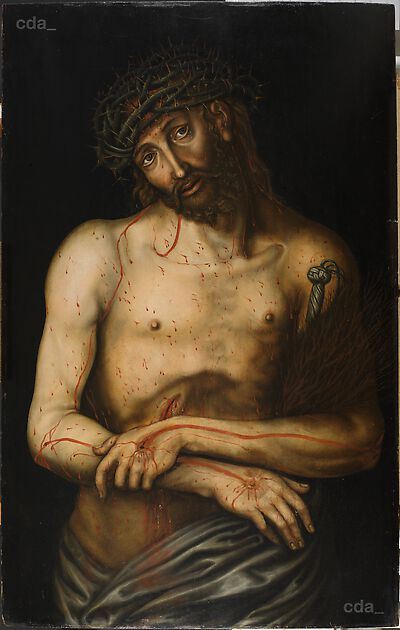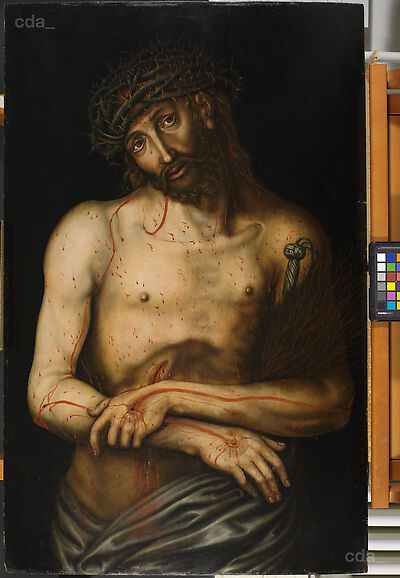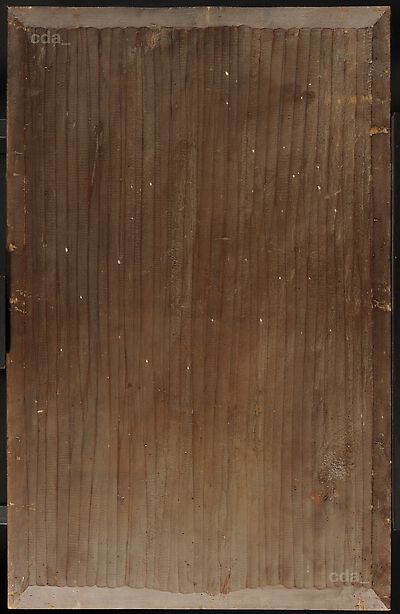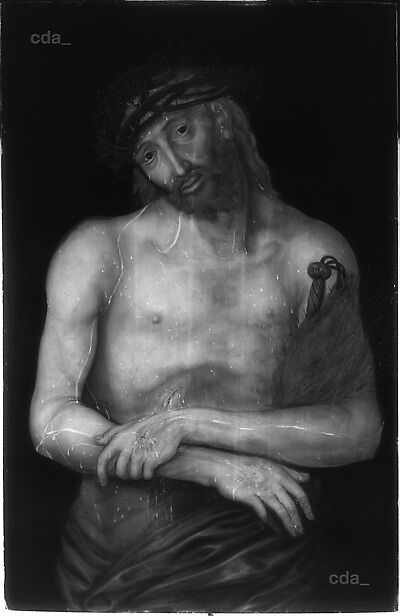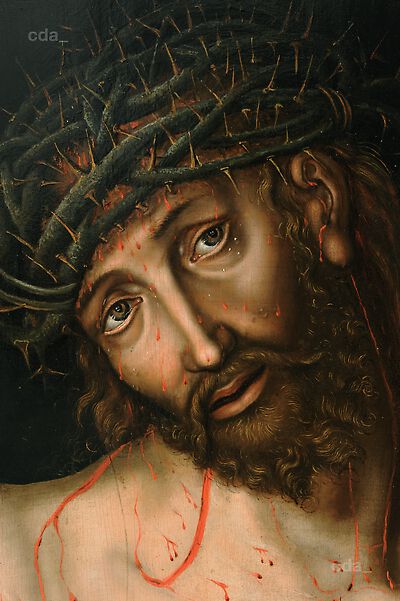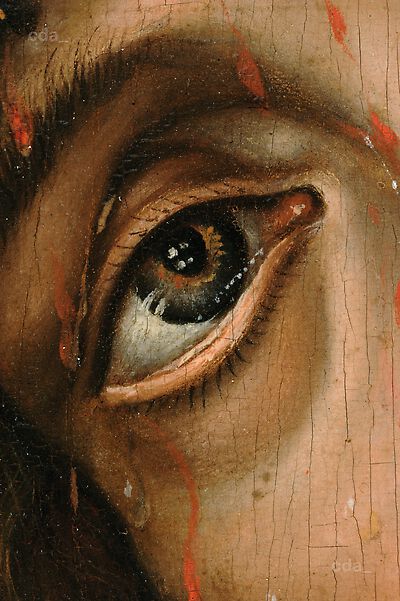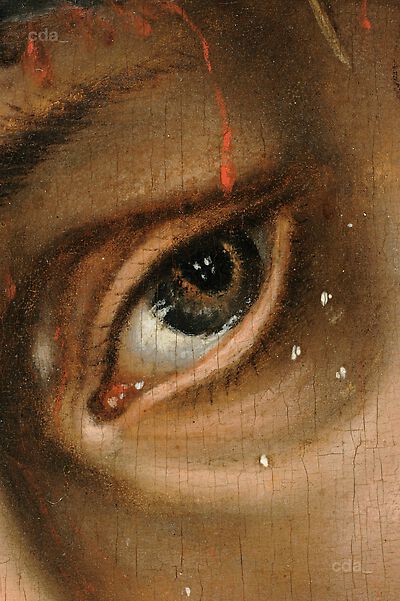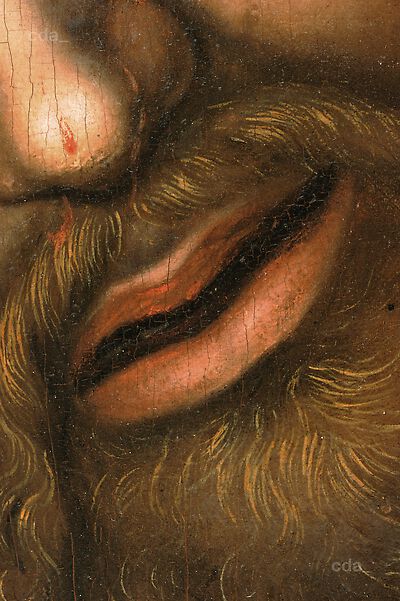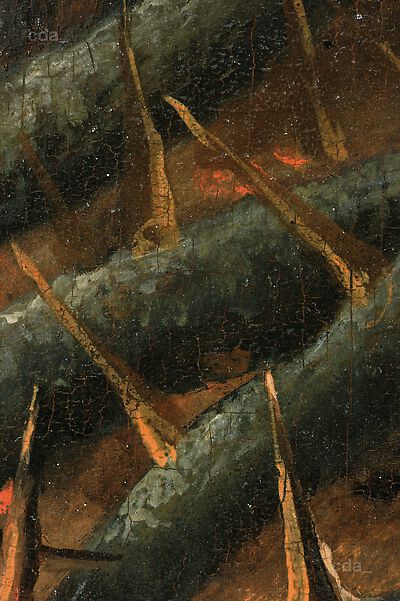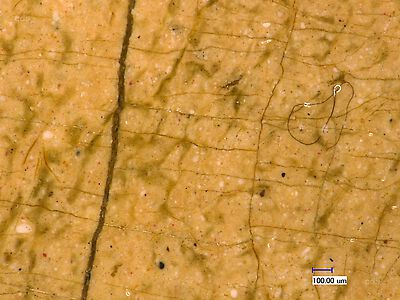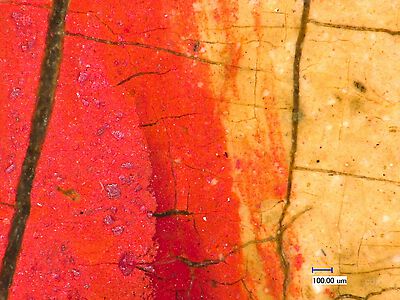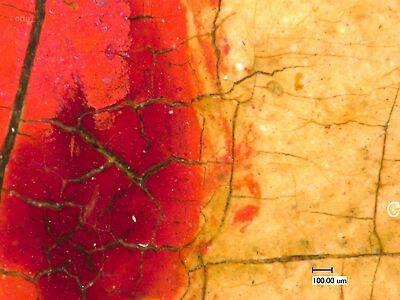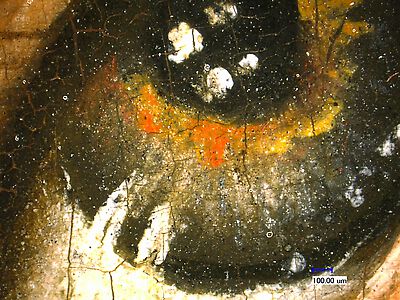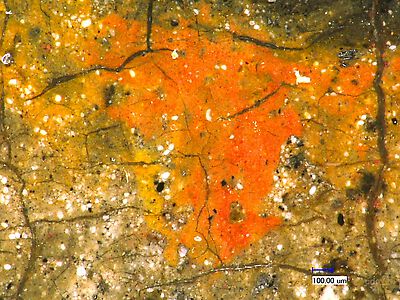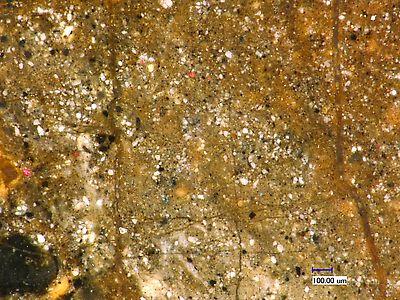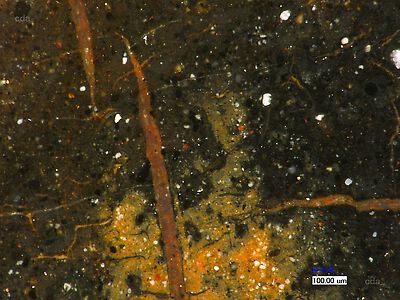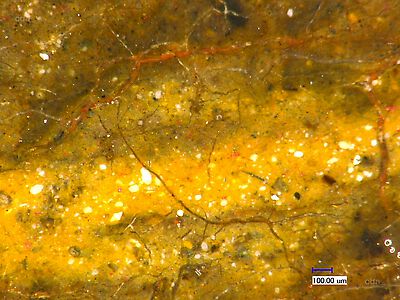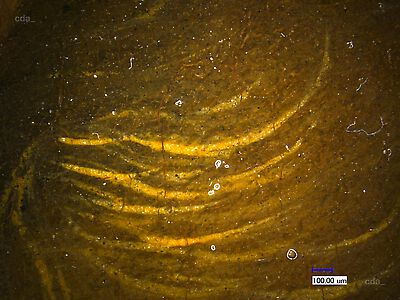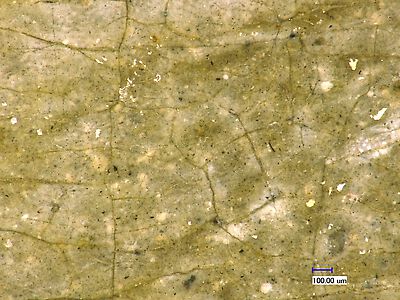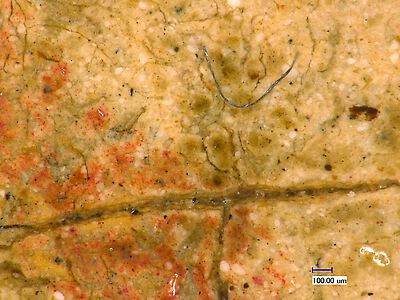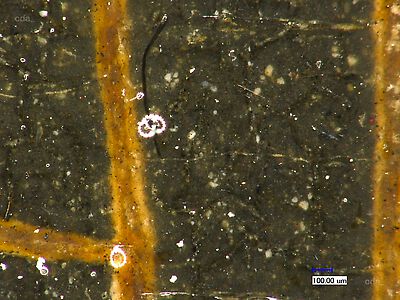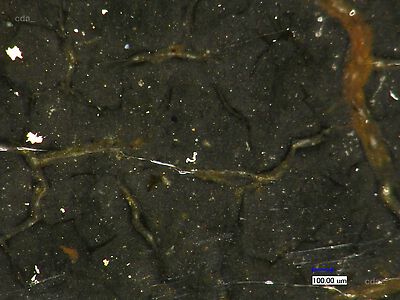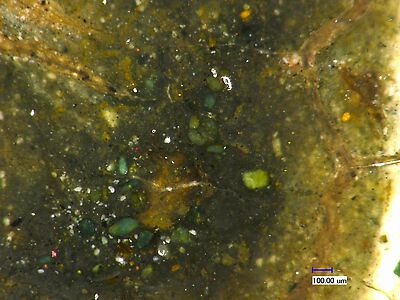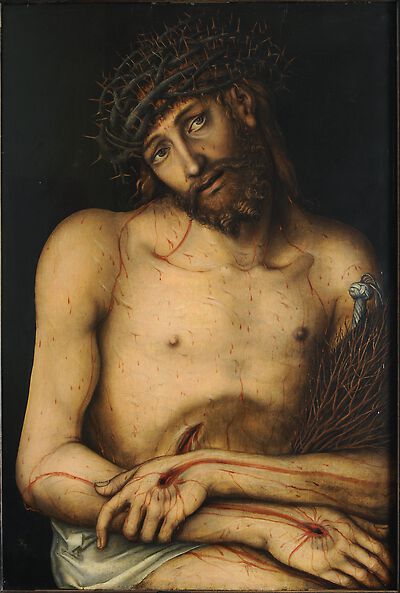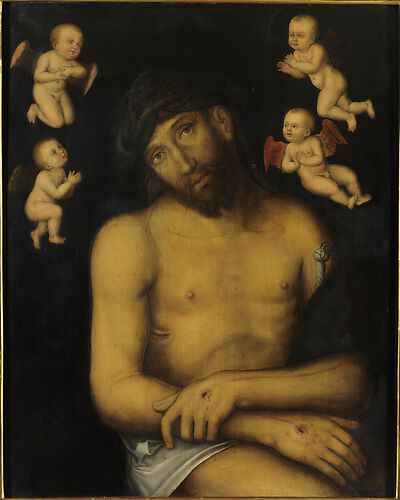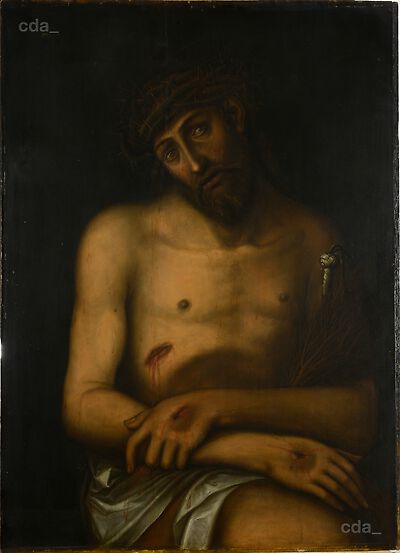Support
The wooden support consisting of three vertically aligned planks (from top left: 22/ 22/ 25.5 cm). It appears to be a hardwood, roughly smoothed with a blockplane on the reverse and bevelled around the edges to a thickness of c. 0.7 cm. A coating was applied at some stage.
Ground and Imprimatura
The ground is dark red and extends to the edge of the panel on all four sides, in sections it has run down the side. There is no barbe present; the panel has not been trimmed.
To date no panel with a dark red ground has been associated with the Cranach workshop.
Underdrawing
The underdrawing was executed with a fine-tipped stylus, contours and essential details were fixed with short and in some cases overlapping lines. The very precise indication of wounds and traces of blood is particularly striking.
Underdrawing executed with a black stylus or drawing impliment have been frequently documented on paintings from the Cranach workshop. However, the execution (particularly the of the wounds) differs considerably from other Cranach paintings.
Paint Layers and Gilding
The x-radiograph records a rapid paint application, using broader brushes in some sections. Single brushstrokes extend beyond the contours of the head and shoulders. No significant changes were made during the painting process.
Using XRF analysis the following pigments were identified by comparing their optical characteristics with the detected elements:
flesh paint: Pb: lead white; Hg: vermilion; Fe, Mn: iron oxide/ ochre; Ca: chalk/ gypsum; Zn: siccative (?)
red: Pb: lead white; Hg: vermilion; Fe: iron oxide/ochre; Ca: chalk/ gypsum; Zn: siccative (?)
brown: Pb: lead white; Hg: vermilion; Fe, Mn: iron oxide/ ochre; Ca: chalk/ gypsum; Zn: siccative (?)
white: Pb: lead white; Hg: vermilion; Fe, Mn: iron oxide/ ochre; Co: blue pigment containing cobalt; Ca: chalk/ gypsum; Zn: siccative (?)
yellow: Pb: lead white; Hg: vermilion; Fe, Mn: iron oxide/ ochre; Ca: chalk/ gypsum; Zn: siccative (?)
grau: Pb: lead white; Hg: vermilion; Fe: iron oxide/cochre Ca: chalk/ gypsum; Zn: siccative (?)
No lead-tin-yellow was found in the yellow section of the eye.
The pigments are very coarsely ground.
The identified pigments were used in the Cranach workshop and generally in panel painting north of the Alps in the 16th century as well as the following centuries. However, as yet no painting exhibiting such coarsely ground pigments has been associated with the Cranach workshop. The painting technique is also different from that of other verified Cranach paintings.
[unpublished examination report, G. Heydenreich, 2018]
